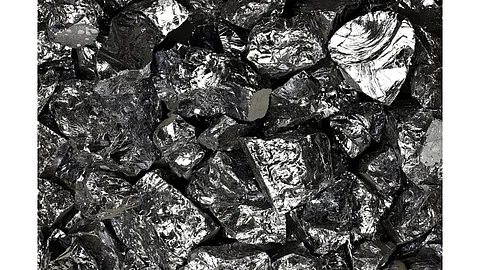

H1 2025 polysilicon output in China dropped by 44% YoY, yet there has been little respite in oversupply
Prices have stayed below production costs for over 14 months, leading to losses for manufacturers
The government is pushing for industry reforms, urging consolidation and quality upgrades to combat disorderly, low-price competition
Polysilicon producers in China suffered widespread losses in H1 2025, as they slashed output to remain afloat in a tough business environment. According to the Silicon Industry Branch of the China Nonferrous Metals Industry Association, the average monthly operating rates for polysilicon and wafer production dropped to historic lows of 38.6% and 44.3%, respectively during the reporting period.
Polysilicon manufacturers collectively produced a combined 597,000 tons in the first half of this year, representing a 44% decrease compared to H1 2024. In H1, the country’s average monthly polysilicon output was 100,000 tons. In February 2025, it dropped to a record low of 92,000 tons, representing a 42.2% decrease year-on-year (YoY).
Despite the efforts of domestic polysilicon producers to cut production, the oversupply situation has not improved. At the end of June 2025, the country’s domestic polysilicon inventory stood at 367,000 tons, having dropped slightly from the historical high of 398,000 tons at the end of 2024.
During H1 2025, the silicon wafer output of China totaled 313.8 GW with a 23.8% YoY decrease, corresponding to a polysilicon demand of 628,000 tons.
In terms of polysilicon, prices remained stable for some time – between January (RMB 40,600 ($5,652)/ton) until mid-April this year (RMB 41,700 ($5,804)/ton) – thanks to the installation rush that boosted downstream demand prompted by China’s June 1, 2025 deadline. While wafer prices rose during this period, polysilicon remained flat.
As the installation rush ended during mid-April to June this year, referred to by the association as the downward phase, production dropped as well. But with high inventories, prices went down. At the end of June, polysilicon prices dropped by 17.5% to RMB 34,400 ($4,778)/ton. The average price of 182 mm wafers fell to RMB 0.95/piece ($0.13/piece), also below cost.
According to the association, the average price of polysilicon in H1 2025 declined 28.8% YoY to RMB 36,800 ($5,111)/ton. Prices have been below production costs for more than 14 months now.
Looking ahead, the association forecasts global solar PV installations to reach about 580 GW, which will require about 1.4 million tons of polysilicon, excluding inventory. China’s domestic demand is estimated at 1.3 million tons.
China is projected to produce approximately 1.35 million tons of polysilicon in 2025, which means the association expects the country to roll out about 750,000 tons in H2. It does expect the inventory to rise by close to 30,000 tons.
The Chinese government recently advised the country’s solar industry to curb disorderly and low-price competition, while improving product quality and phasing out outdated capacity (see China Solar PV News Snippets).
Reflecting on the government’s mandate, the association says that the Chinese polysilicon sector is undergoing major reforms to curb overcapacity and low-quality competition. Measures like pricing rules, mergers, and standards aim to stabilize the market and promote efficient, high-quality production.
